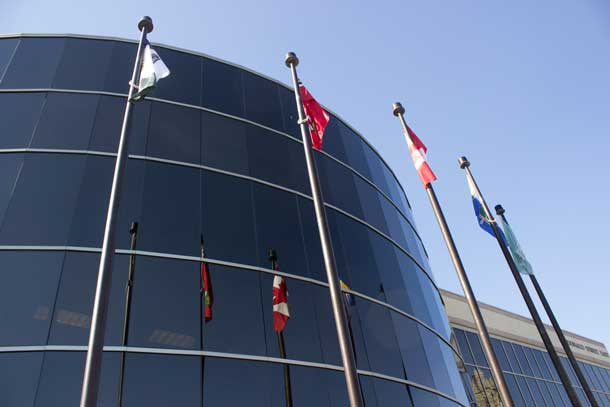THUNDER BAY – Expect only modest growth in Thunder Bay. That is the Conference Board of Canada’s outlook for the city. This is a contrast to most Ontario cities which can expect real GDP growth above 2 per cent this year, according to The Conference Board of Canada’s Metropolitan Outlook: Summer 2016.
“The weaker Canadian dollar and moderate demand from the U.S. continue to provide a lift to many Southwestern and Eastern Ontario metropolitan economies and their respective manufacturing industries,” said Alan Arcand, Associate Director, Centre for Municipal Studies, The Conference Board of Canada. “Unfortunately, this positive outlook does not extend to the two Northern Ontario cities in our report—Greater Sudbury and Thunder Bay—both of which are expected to post lacklustre growth in 2016.”
HIGHLIGHTS
- Kitchener–Cambridge–Waterloo should boast the fastest growing economy this year among the 15 cities covered in the report.
- Southwestern Ontario cities can expect real gross domestic product (GDP) growth above 2 per cent this year.
- Greater Sudbury and Thunder Bay’s economies are set to grow by less than 1 per cent.
Thunder Bay‘s economy continues to expand modestly. Real GDP is forecast to grow by a modest 0.9 per cent in 2016, following a 1.3 per cent gain in 2015. This year’s growth will be powered by a solid advance in manufacturing, with output projected to expand by 3.4 per cent. In particular, a weaker Canadian dollar and a relatively strong U.S. housing market bode well for the city’s forest products industry. In addition, Thunder Bay should see growth–albeit very modest–in many of its service industries.
Unfortunately, the outlook for the region’s construction sector remains negative. In fact, construction output is expected to dip another 1.8 per cent in 2016, its fourth consecutive annual decline. Although employment is forecast to rise roughly 2 per cent in 2016, this gain will only partly offset declines in each of the past two years.
Kitchener–Cambridge–Waterloo should boast the fasting growing economy this year among the 15 cities covered in the report, with real GDP forecast to increase by 3 per cent. The city’s construction sector, set to rise by 4.9 per cent in 2016, continues to benefit from work on the Ion light-rail project. Driven by an innovative high-tech sector, the CMA’s manufacturing sector is expected to rise by 3.3 per cent this year, as a string of new investments have been announced. Overall, employment in the area is forecast to bounce back from a 1.1 per cent dip in 2015 to a 3.1 per cent increase this year.
Oshawa‘s economy will continue to grow at a healthy pace in 2016. In particular, solid gains in wholesale and retail, transportation and warehousing and strong growth in manufacturing will fuel the city’s economy. Housing starts, on the other hand, are expected to drop sharply, from 2,587 units in 2015 to 1,958 units in 2016. Fortunately, a better performance from the non-residential sector will help the city’s construction sector post decent growth of 1.7 per cent in 2016. Overall, real GDP is forecast to advance by 2.7 per cent this year and by 2.5 per cent in 2017, leading to the creation of nearly 11,000 jobs over those two years. However, the potential closure of General Motor’s consolidated plant is a dark cloud that hangs over an otherwise bright outlook.
London‘s economy is expected to maintain its positive momentum in 2016. Following advances averaging 2.2 per cent per year between 2014 and 2015, the metro area should post real GDP growth of 2.4 per cent this year, which would mark London’s best three-year economic performance since 1998-2000. The manufacturing sector will continue to be one of the key drivers of the region’s growth. Moreover, the outlook for the construction sector remains favourable, as housing starts are forecast to reach 2,360 units this year–a 12.2 per cent increase over last year. Given this solid economic backdrop, The Conference Board expects employment to climb by 0.8 per cent this year, which is on top of the 3.5 per cent increase recorded in 2015.
Windsor‘s manufacturing sector has also been picking up steam, thanks in large part to FCA Canada’s $3.7-billion investment in its Windsor Assembly Plant and its subsequent hiring of 1,200 workers to manufacture the all-new Chrysler Pacifica. The area’s tourism outlook is also bright, due mainly to a string of major sporting events that the city is hosting. In all, local manufacturing output is forecast to expand by 4.6 per cent this year, while personal services output, which includes many tourist-oriented industries, is projected to climb by 2.9 per cent. Solid advances in these two key industries will support overall real GDP growth of 2.4 per cent in Windsor this year. After creating 3,000 jobs in 2015, the economy is projected to generate an additional 1,400 jobs per year over 20016 and 2017.
Continued growth in St. Catharines–Niagara‘s services sector should help the city’s economy expand by 2.2 per cent this year. In particular, a weaker Canadian dollar plus the recently renovated Ripley’s Believe It or Not should result in a higher number of tourists visiting the Niagara region, providing a lift to the region’s key tourism industry. At the same time, the local manufacturing sector is on track to rebound this year. After contracting by an annual average rate of 1 per cent between 2013 and 2015, manufacturing output should bounce back with a 2.1 per cent gain in 2016, thanks in part to a $13-million investment from General Motors. Despite this good news, employment is poised to fall this year, but job creation should resume in 2017.
Real GDP growth in Kingston is forecast to advance by 2.1 per cent this year. After five years of stagnant growth, the city’s manufacturing sector is set to increase by 1.9 per cent in 2016, thanks to the lower Canadian dollar and moderate U.S. demand, which have resulted in higher exports. Growth is expected to be particularly strong in Kingston’s construction sector, as strong non-residential investment activity boosts overall output by 3.4 per cent this year. In fact, numerous projects are set to begin this year, including the Limestone School District’s $36-million high school, the Kingston Frontenac Public Library’s $13.8-million renovation of its central branch, and the construction of the Rideau Heights Community Centre. In line with Kingston’s positive economic outlook, employment in the region is expected to increase by 1.4 per cent in 2016.
Persistently soft nickel prices continue to weigh on Greater Sudbury, as real GDP is forecast to rise by only 0.6 per cent in 2016. However, this represents a big improvement over the past four years when output fell by a cumulative 2.8 per cent. Still, the city’s primary and utilities sector, which includes the mining industry, is poised to contract for a fifth straight year, although the decline in 2016 will be limited to 0.8 per cent. On the bright side, output growth in Sudbury’s services sector is set to accelerate from 0.7 per cent last year to 1.2 per cent this year. At the same time, the construction sector is forecast to post a modest gain in 2016, despite further easing in housing starts. The resumption of economic growth will allow employment to grow by 0.8 per cent in 2016, the best showing since 2013.
Released today, Metropolitan Outlook: Summer 2016 is The Conference Board of Canada’s analysis of 15 Canadian census metropolitan areas (CMAs).







